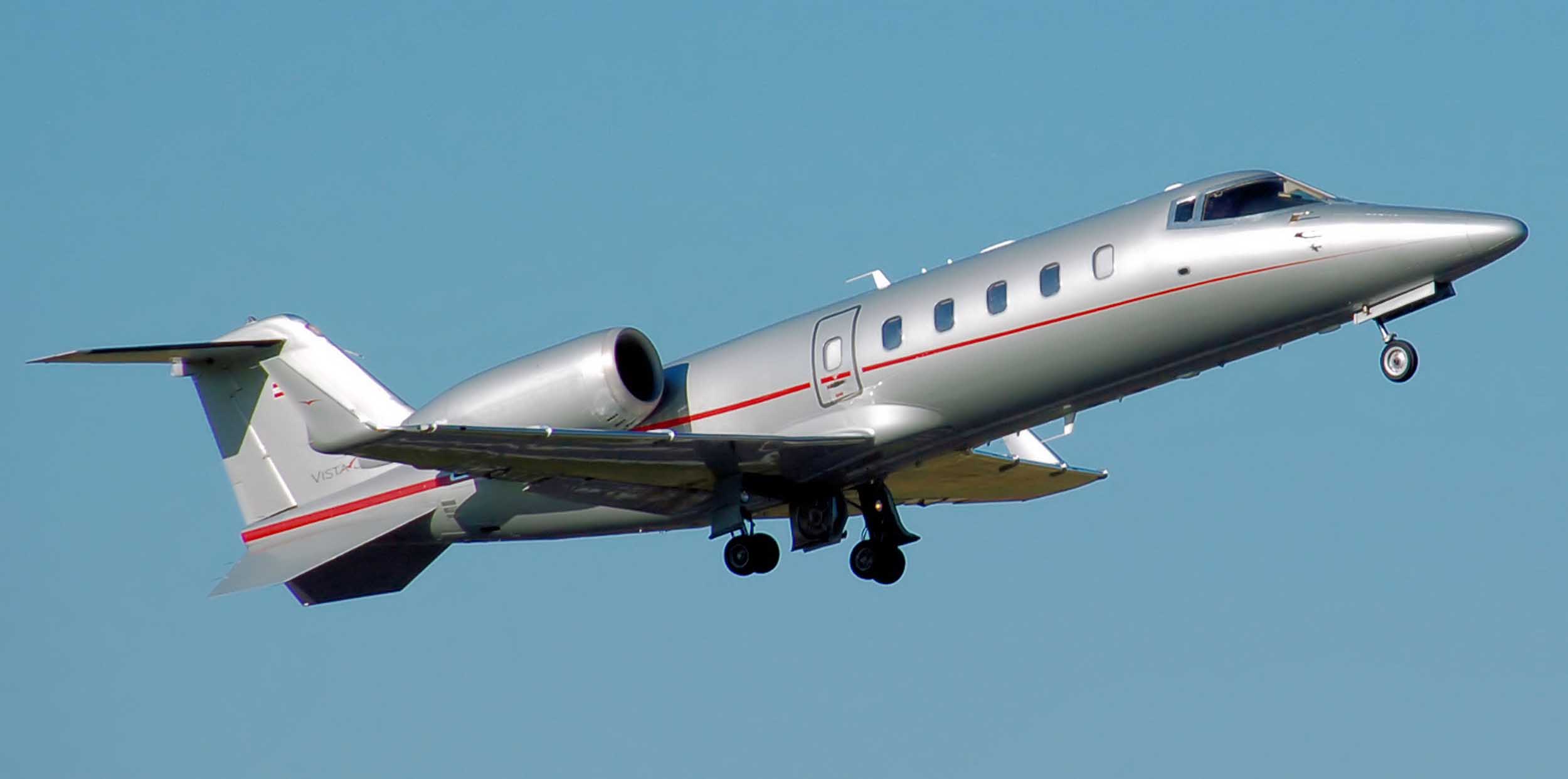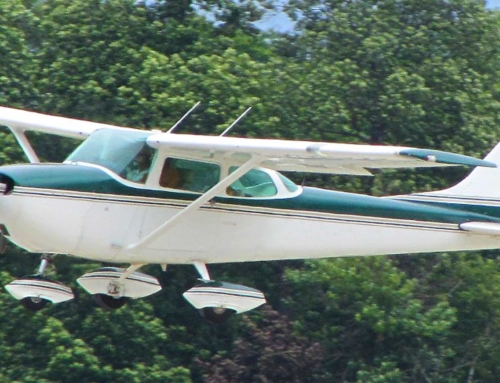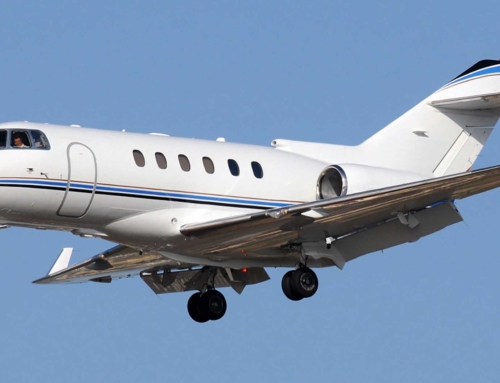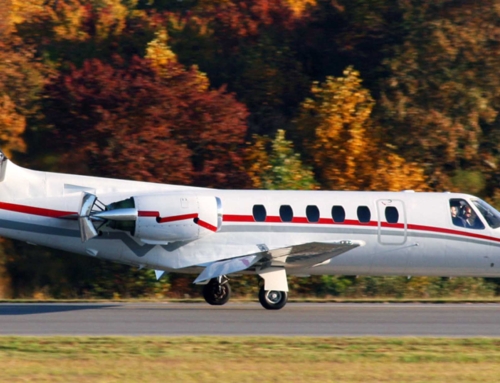Before the LearJet 60 took to the skies, its story began with Bill Lear’s pioneering vision in business aviation. The original Learjet legacy started in the 1960s, revolutionizing private air travel with the first purpose-built business jet, the Learjet 23. By the late 1980s, Gates Learjet Corporation (which had acquired the company from Bill Lear) wanted to evolve its successful Learjet 55 series into something more powerful and efficient.
In 1990, Gates Learjet was acquired by Bombardier Aerospace, bringing fresh resources and engineering expertise to the brand. The company immediately began development of what would become the Learjet 60, aiming to create a mid-size aircraft that could outperform its predecessors while maintaining the brand’s reputation for speed and luxury.
The Introduction Of LearJet 60
The Learjet 60 was introduced in 1993 as a significant upgrade from the Learjet 55. Engineers stretched the fuselage by 43 inches, redesigned the wings with improved aerodynamics, and installed more powerful Pratt & Whitney PW305A engines. These changes resulted in better runway performance, a higher service ceiling, and increased speed – the Learjet 60 could cruise at Mach 0.81, making it one of the fastest aircraft in its class.
The Addition Of LearJet 60XR
As aviation technology advanced through the 1990s and early 2000s, Bombardier saw an opportunity to enhance the platform further. This led to the development of the Learjet 60XR, which was certified in 2007. The XR variant maintained the impressive performance of its predecessor while introducing a modernized Rockwell Collins Pro Line 21 avionics suite and a redesigned cabin for improved passenger comfort.
The End Of LearJet
Despite the Learjet 60 series’ success, market pressures and changing consumer preferences in the business aviation sector eventually led Bombardier to announce the end of Learjet production in 2021, marking the conclusion of an aviation legacy that spanned over five decades.
The Learjet 60/60XR represents a pivotal chapter in business aviation history, embodying both the innovative spirit of Bill Lear and the industrial might of Bombardier. Today, these aircraft continue to serve as reliable workhorses in private and corporate fleets worldwide, a testament to their robust design and enduring appeal.
- Country of Origin: Canada
LearJet 60 Statistics
- Maximum Speed: 465 kts
- Maximum Range: 2,418 nm
- Maximum Occupants: 10
- Range Of Years Manufactured: 1993-2003
- Total Aircraft Build: 318
- Current Operational Aircraft: 258
- Useful Load: 2,228 lbs
- Average Sale Value: $1.4M
- Average Days On Market For Sale: 96 Days
- VREF Demand Rating: Normal
LearJet 60XR Statistics
- Maximum Speed: 465 kts
- Maximum Range: 2,398 nm
- Maximum Occupants: 9
- Range Of Years Manufactured: 2007-2013
- Total Aircraft Build: 430
- Current Operational Aircraft: 109
- Useful Load: 8,848 lbs
- Average Sale Value: $3.2M
- Average Days On Market For Sale: 478
- VREF Demand Rating: Seller
Operational Resources
Operations Manual
Maintenance Document
Local Resources
Manufacturer
Insurance
LearJet 60 Details
Interior
The LearJet 60 is a medium-sized business jet that comfortably accommodates 8 passengers, typically outfitted with one and a half cabin zones. It includes a fully enclosed lavatory area as well as a baggage area to remove any clutter within the cabin. Interior options may include WiFi, a customized surround sound system, a foldout table for productive meetings and delicious meals, and mood lighting systems.
Exterior
The LearJet 60 is equipped with 2 Pratt & Whitney Canada PW305A engines. This aircraft boasts a streamlined fuselage with modern, dynamic color schemes, complemented by its signature rectangular windows that provide ample natural light. The jet’s swept wings are fitted with winglets to enhance aerodynamic efficiency, while its rear-mounted engines ensure a smooth, uncluttered profile, solidifying its reputation as a sleek and reliable choice for executive travel.
Avionics
- Dual Collins ADC-850D Air Data Computers
- Dual Collins AHC-85E Altitude Headline Computers
- Dual Universal UNIS-1C FMS w/dual GPS
- Dual Collins FCC-850A Flight Control Computers
- Dual Collins VIR-432 Nav Units
- Dual Collins VHF-422A Comm Units
- Dual Honeywell 800 Digital Acquisition Units
- Four tube Collins EFD/MFD-871 with 7” x 8” Displays
- Dual TDR-94D Mode S” Transponders
- Collins TTR920 TCAS w/change 7.1
- Collins WXR-840/RTA-844 Color Weather Radar System
- Collins ALT-55B Radio Altimeter
- Honeywell Mark V EGPWS with Windshear Alert
- Universal CVR-30B Cockpit Voice Recorder
- Artex C460-2 MHz ELT w/Nav Interface
Specifications
- Max Landing Weight: 19,500 lbs.
- Configuration: Twin Engine, Fanjet Engine
- Max Seats: 10
- Max Takeoff Weight: 23,500 lbs.
- Cruise: 436 kts
- Range: 2,186 nm
- Takeoff (Balanced Field Length): 5,450 ft.
- Landing: 5,208 ft.
- Wing Span: 43 ft. 9 in.
- Length: 58 ft. 8 in.
- Height: 14 ft. 8 in.
- Max Payload: 2,228 lbs.
LearJet 60XR Details
Interior
The Learjet 60XR is typically configured to accommodate 6-7 passengers in a refined double-club arrangement featuring premium leather seats. With an interior height of 5’7″ and a width of 5’9″, the cabin offers ample headroom for comfort. Its aesthetic is elevated by high-gloss wood veneers and brushed metal accents along sidewalls and cabinets. A compact galley ensures convenient refreshment storage and preparation space, while a private lavatory resides at the rear. Large windows flood the roughly 18-foot cabin with natural light, enhancing the overall travel experience.
Exterior
Similarly to the 60, the LearJet 60XR is equipped with 2 Pratt & Whitney Canada PW305A engines. The exterior design most resembles the LearJet 23 variant with its T-tail, panoramic windshield, and traditional swept wing design.
Avionics
- Rockwell Collins Pro Line 21 avionics
- 4 8”×10” screens
- Upgraded AHRS and FMS
- Electronic charts
- Enhanced MFD
- XM radio weather (optional)
Specifications
- Max Landing Weight: 19,500 lbs.
- Configuration: Twin Engine, Fanjet Engine
- Max Seats: 9
- Max Takeoff Weight: 23,500 lbs.
- Cruise: 436 kts
- Range: 2,044 nm
- Takeoff (Balanced Field Length): 5,450 ft.
- Landing: 5,317 ft.
- Wing Span: 43 ft. 7 in.
- Length: 58 ft. 6 in.
- Height: 14 ft. 5 in.
- Max Payload: 2,104 lbs.
LearJet 60 Models
LearJet 60
The LearJet 60 is a mid-size business jet known for its speed and range. It features a spacious cabin, accommodating up to eight passengers, and is equipped with advanced avionics. The aircraft offers a smooth ride and efficient performance, making it a popular choice for corporate travel.
LearJet 60SE
The LearJet 60SE is an upgraded version of the LearJet 60, featuring enhanced avionics and improved fuel efficiency. It retains the spacious cabin and luxurious amenities while offering advanced technology for better navigation and safety. This model is ideal for travelers and pilots seeking modern comfort and performance in business aviation.
LearJet 60XR
The LearJet 60XR is the last iteration of the LearJet 60 series with a refined cabin layout and superior performance. It accommodates 6-7 passengers in a double-club configuration and features upgraded interiors with high-quality materials. Enhanced range and speed make it ideal for long-distance business travel.
Top LearJet 60 Questions
How Much Does A LearJet 60 Cost?
When new, a LearJet 60 costs $11,900,000; however, a new LearJet 60XR costs $14,674,000.
How Fast Is A LearJet 60?
The LearJet 60 can fly as fast as 465 kts. Its normal cruise speed is 436 kts and economy cruise is 423 kts.
How Easy Is It To Fly A LearJet 60?
Known for its climbing power at 4,500 feet per minute while using both engines but not necessarily advised to do so for passenger comfort, this aircraft demands skill and ultimately respect to pilot it. It is reported to have one of the highest accident rates in close, primarily because landings are not well planned and executed using its intelligent power management systems.
What Engine Does A LearJet 60/XR Have?
Both the 60 and 60XR are equipped with 2 Pratt & Whitney Canada PW305A engines.
What’s The Typical Range & Seating Capacity Of The LearJet 60XR?
The Learjet 60XR has a range of approximately 2,405 nautical miles with 4 passengers and IFR reserves. It typically seats 7-8 passengers in a double-club configuration. The cabin measures 17.7 feet long, 5.9 feet wide, and 5.7 feet high.
How Does The 60XR Differ From Previous LearJet Models?
The 60XR, introduced in 2007, features significant upgrades over its predecessor, the Learjet 60. Key improvements include the Rockwell Collins Pro Line 21 avionics suite with 4 large LCDs, upgraded engines with better performance, a redesigned interior with more cabin space, and improved aerodynamics. This aircraft also has better hot-and-high performance capabilities.
What Are The Operating Costs & Typical Charter Rates For The LearJet 60XR?
Flying a LearJet 60XR for 200 hours per year is about $926,926 or $1,464,731 for flying 400 hours per year (Liberty Jet). The average hourly rental rate of the Learjet 60XR is around 4,500 USD per hour (Paramount Business Jets), depending on the location, duration, and specific operator. This aircraft is considered relatively economical in its class while maintaining strong performance.
What Airports Does The LearJet 60XR Operate From?
The Learjet 60XR operates from most regional airports and many smaller airfields. This aircraft requires about 5,450 feet of runway for takeoff at maximum weight at sea level under standard conditions. The LearJet 60XR has a climb rate of about 4,500 feet per minute and features relatively short runway requirements, making it versatile for accessing airports at high altitudes or in hotter climates.
Related VREF Resources
Bombardier Smart Link Plus & Aircraft Maintenance Software
Navigate VREF’s Aircraft Appraisal Resources
Initiate the process with an ASA Senior Accredited Appraiser.





